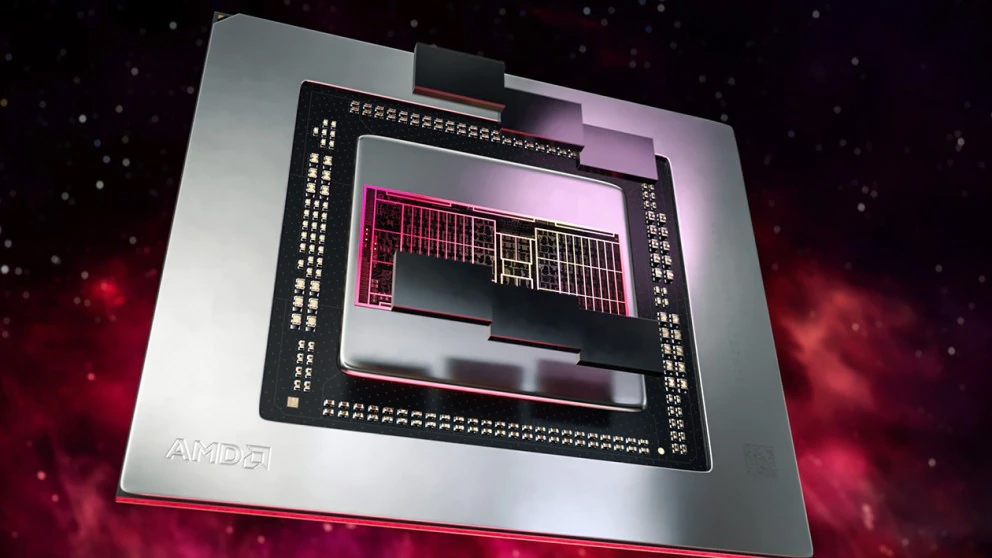
Sales of AMD’s Radeon graphics processors dropped sharply in the third quarter compared to the same period a year ago as the company prepared to introduce its next-generation products several months down the road, AMD’s chief executive Lisa Su announced on Tuesday. The first products based on the all-new RDNA 4 architecture — which could become some of the best graphics cards — are set to be released in early 2025. “Graphics, revenue declined year over year as we prepare for transition to our next generation Radeon GPUs based on our RDNA 4 architecture,” Su said at the company’s conference call with analysts and investors. “In addition to a strong increase in gaming performance, RDNA 4 delivers significantly higher ray tracing performance, and adds new AI capabilities. We are on track to launch the first RDNA 4 GPUs in early 2025.” Ray tracing performance improvements with AMD’s RDNA 4 architecture was discussed in the industry for a while, though this is the first time when a high-ranking AMD official confirms this. Some preliminary details on what could be improved in AMD’s RDNA 4 architecture when it comes to ray tracing has already leaded and that information indicates that we could expect doubling ray tracing performance of RDNA 4 GPUs compared to RDNA 3 GPUs, though at this point this is largely a speculation. As for additional AI capabilities, it is reasonable to expect RDNA 4 to support more instructions aimed at AI workloads as well as data formats better suitable for machine learning. What remains to be seen is whether all of these enhancements for AI will be enabled on client graphics cards and not reserved for Radeon Pro add-in-boards aimed at workstations and servers. An announcement in early 2025 almost certainly means that AMD intends to formally introduce its first RDNA 4-based graphics processors at CES. Launching a gaming GPU after the holiday season is something that is not really common in the industry as both AMD and Nvidia try to address needs of gamers with new products before the holiday season when new games are released. This is what happened to AMD’s RDNA 2 and RDNA 3 families of products and multiple lineups before that. Still, GPU designers tend to unveil their new laptop GPUs along with their notebook partners and the latter prefer to showcase their latest products at trade show. Therefore, if AMD decides to start rolling out its RDNA 4-based offerings from notebook GPUs (another uncommon decision), then CES the right time for a launch.Get Tom’s Hardware’s best news and in-depth reviews, straight to your inbox.
AMD: RDNA 4 coming in early 2025, set to deliver ray tracing improvements, AI capabilities

Sales of AMD’s Radeon graphics processors dropped sharply in the third quarter compared to the same period a year ago as the company prepared to introduce its next-generation products several months down the road, AMD’s chief executive Lisa Su announced on Tuesday. The first products based on the all-new RDNA 4 architecture — which could become some of the best graphics cards — are set to be released in early 2025. “Graphics, revenue declined year over year as we prepare for transition to our next generation Radeon GPUs based on our RDNA 4 architecture,” Su said at the company’s conference call with analysts and investors. “In addition to a strong increase in gaming performance, RDNA 4 delivers significantly higher ray tracing performance, and adds new AI capabilities. We are on track to launch the first RDNA 4 GPUs in early 2025.” Ray tracing performance improvements with AMD’s RDNA 4 architecture was discussed in the industry for a while, though this is the first time when a high-ranking AMD official confirms this. Some preliminary details on what could be improved in AMD’s RDNA 4 architecture when it comes to ray tracing has already leaded and that information indicates that we could expect doubling ray tracing performance of RDNA 4 GPUs compared to RDNA 3 GPUs, though at this point this is largely a speculation. As for additional AI capabilities, it is reasonable to expect RDNA 4 to support more instructions aimed at AI workloads as well as data formats better suitable for machine learning. What remains to be seen is whether all of these enhancements for AI will be enabled on client graphics cards and not reserved for Radeon Pro add-in-boards aimed at workstations and servers. An announcement in early 2025 almost certainly means that AMD intends to formally introduce its first RDNA 4-based graphics processors at CES. Launching a gaming GPU after the holiday season is something that is not really common in the industry as both AMD and Nvidia try to address needs of gamers with new products before the holiday season when new games are released. This is what happened to AMD’s RDNA 2 and RDNA 3 families of products and multiple lineups before that. Still, GPU designers tend to unveil their new laptop GPUs along with their notebook partners and the latter prefer to showcase their latest products at trade show. Therefore, if AMD decides to start rolling out its RDNA 4-based offerings from notebook GPUs (another uncommon decision), then CES the right time for a launch.Get Tom’s Hardware’s best news and in-depth reviews, straight to your inbox.
